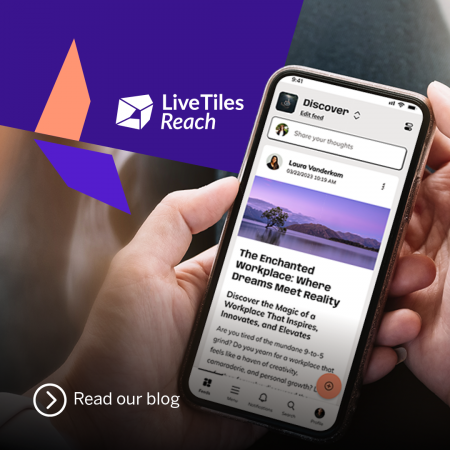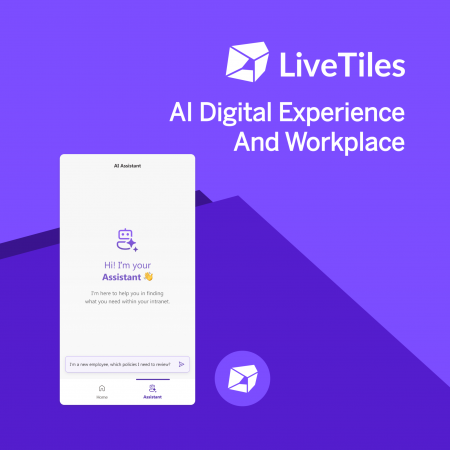In today’s digital realm dominated by Microsoft, SharePoint intranets play a crucial role in enhancing connectivity and productivity. While ‘out-of-the-box’ solutions offer a strong starting point, Andy Hodges, CEO of ThinkShare and Microsoft Partner, stresses the need for additional tools like LiveTiles, especially for large organizations.
Hodges’ experience highlights the importance of adapting SharePoint intranets to meet the evolving needs of modern businesses. Integrating solutions like LiveTiles enables organizations to create dynamic hubs that streamline communication, collaboration, and resource access.
Enhancing SharePoint intranets with innovative tools is essential for meeting the demands of today’s enterprises.
Andy, what is your relationship with the intranet?
I have been building workplace intranets since 2007, even before founding ThinkShare four years ago. Throughout this time, SharePoint has played a significant role. While initially more focused on on-premises document management, SharePoint has evolved into the comprehensive intranet solution we know today.
Can you tell us about that transformation of SharePoint into a ‘modern’ intranet?
The change happened when SharePoint Online was released, and the ‘on-prem’ product moved to the cloud. Prior to that, it was very costly for businesses to license, and it was also difficult to configure and customize with aspects such as branding. With SharePoint Online (or ‘SharePoint modern’ intranet as it was first called) the switch to a cloud-based platform made it an especially useful tool for hosting a company intranet. It will not be up to the level of an enterprise-level intranet, however, which is why solutions like LiveTiles are used to extend its capabilities and solve our clients’ problems.
What kind of problems do your clients ask you to solve for them?
Clients often approach us with a range of challenges they need help resolving. This includes updating outdated content on existing intranets or revamping their presentation methods to align with modern standards.
However, larger enterprises commonly grapple with what we call ‘information chaos’, where accessing documents or data from various departments becomes a daunting task. Moreover, clients often face broader strategic issues, such as low engagement levels or the desire to leverage their intranet for broader digital transformation initiatives.
Will your customers always know that an intranet is the answer to those strategic problems?
Yes. Clients are savvy: they will often know they need an intranet, but they will not always know what it is fully capable of. Of course, it is an internal publishing portal for employees, and most businesses will benefit from that – but some may confuse it with a ‘workspace’ or a collaboration tool.
An intranet can provide access to those tools, but it is much more – it is a hub to draw applications and information into a single place. When you open it up in the morning, it should be the one place you go to find everything you need.
What do the best intranets do, in your view?
The best intranets should increase employee engagement, bring people together to work better, help information be found quicker, and increase an employee’s sense of belonging by connecting them to news and information.
Modern organizations are hybrid, remote and distributed: intranet should knit that fabric to help them become more coherent.
What do some intranets do that is not helpful?
The point of an intranet is to provide information. Of course, it is important to restrict access to some information by seniority, region, or relevance – but if it is too closed, it defeats the purpose.
There is also a problem when businesses do not curate the information or applications, they make available via intranet. If you put everything on it without rhyme or reason as to their relevance or without it being well-organized, it becomes overwhelming.
Intranet features vary from client to client: how do you prioritize what takes precedence in a project?
The essential list for every intranet is quite simple – it starts with ensuring structure, information, applications and even branding is helpful to staff. In hybrid and distributed workplaces, you also need to make it accessible on both mobile and desktop.
However, for many small businesses, out of the box SharePoint will usually be good enough for this. A solution like LiveTiles is more applicable the more users you have and more features are needed to meet more complex scenarios.
What kind of scenarios are you talking about?
In larger organizations with frontline workers, the ability to give them access to an intranet without a Microsoft license is critical. LiveTiles (and particularly LiveTiles Reach) can offer that.
Likewise, when one business acquires another, they will need to onboard new joiners on the intranet before IT systems are stitched together. Those are things you cannot do with out-of-the-box SharePoint.
Universally, an intranet is a tool that should improve internal communication. How does it do that?
In simple terms, an intranet is another good channel for communication. When implemented correctly, it helps you reach as many users as possible.
While email is applicable in some cases (in direct communications), an intranet is essential for those useful reminders like telling teams offices are closing, or reports need to be complete by a given time. You need the ‘right place’ to give people a message. That is a limited example, but it is a reminder that intranet should give people what they need to do the best work they can.
That is an example of ‘top-down’ communications – what about communications between employees themselves?
If you are joining your employees for their knowledge, knowledge sharing is an essential aspect of a modern intranet, not a nice-to-have.
Pockets of people around the business can improve attainment and deliver a better service by sharing ideas and raising collective knowledge. Intranet lets you get to the crux of issues quicker. If you do not have a mechanism like an intranet, employees will struggle to do their job as quickly, which, of course, impacts customer delivery.
Moving on to other features, what does a SharePoint intranet need to do to set itself apart from a SharePoint out-of-the box-solution?
Branding and People Directories are important. It is important to immerse internal customers in your brand for the same reasons you brand externally.
People Directories are a separate issue that is difficult to achieve in SharePoint out-of-the-box. You cannot filter SharePoint easily and even custom coding provides limited search capability. A client needs information about people, who they report to, and what skills or qualifications they have.
A product like LiveTiles can take the basic data you have in SharePoint and augment how you access it by providing a powerful search functionality.
Last of all if that is essential now… what will be essential in 5 years’ time?
In today’s dynamic landscape, what is crucial now may soon become indispensable. AI, for example, is already proving essential for many through intranet integration.
Even in its initial stages, AI streamlines workflows by surfacing content and facilitating information retrieval within organizations, such as in law firms where it expedites tasks like case research and contract review.
However, amidst the excitement, it is vital to assess tangible business value and customer service impact. Developing an intranet solution should address these questions.
Thanks to Andy for his insights.
At LiveTiles, our Gartner-rated ‘visionary’ intranet solution leverages Microsoft SharePoint to empower global enterprises. Discover how LiveTiles is transforming organizations worldwide with a demo. Join over 1000 enterprises benefitting from a superior digital employee experience.









